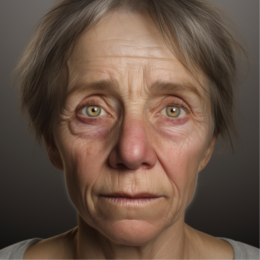The Heat Is On: Uncovering the Healing Power of Thermotherapy

You’re scrolling through social media, and suddenly you spot someone wearing a moist heat pack around their neck. “What’s this?” you wonder. You’ve stumbled upon the increasingly popular trend of thermotherapy, and it’s not just for your grandma anymore. The young and the old are warming up to this therapy, and so should you. Let’s find out exactly what thermotherapy is used for.
What Is Thermotherapy?
Thermotherapy is the use of heat to treat various medical conditions. Heat has been used for centuries to ease pain and speed up the healing process. From hot stone massages to the good old hot water bottle, heat treatments come in various shapes and forms, but the principle remains the same: Heat is therapeutic.
Meet Karen. She’s 35, a marathon runner, and she swears by thermotherapy. Recently, she experienced muscle tension after a strenuous workout. Not wanting to rely on painkillers, she opted for a hot compress. Karen didn’t need a scientific study to tell her it worked; she felt the relief almost instantly.

How Does Thermotherapy Work?
Heat therapy primarily works by improving blood circulation, which in turn helps to deliver oxygen and nutrients to muscles and joints. This can relieve pain, rehabilitate injured tissues, and improve flexibility. For Karen, the immediate relief was due to the heat widening her blood vessels, which increased blood flow to the stressed area, thus relaxing her muscles.
Types of Thermotherapy
- Dry Heat: Includes saunas, hot stones, and heating pads.
- Moist Heat: Includes hot baths, steam rooms, and moist heating packs.
- Infrared Heat: Utilizes infrared light to penetrate deeper into the body.
Statistics:
- According to a 2019 study published in the Journal of Clinical Medicine, 76% of participants reported reduced muscle pain after using heat therapy.
- A survey from the American Physical Therapy Association (APTA) found that 62% of physical therapists recommend thermotherapy for chronic pain relief.
- The market for thermotherapy products is expected to reach $3.2 billion by 2025, as reported by a Global Market Insights study.
Quick Poll
What Is Thermotherapy Used For?
Thermotherapy is used for a variety of purposes, from pain relief to improving skin conditions. Let’s break it down:
- Pain Relief: Common for muscle aches, tension, and stiffness.
- Arthritis: Helps in reducing the symptoms of arthritis.
- Skin Rejuvenation: Used in some spas for making the skin appear more youthful.
- Detoxification: Sweating during heat therapy can help in detoxifying the body.
When to Avoid Thermotherapy
Though thermotherapy can be miraculous, it’s not for everyone. Here are some specific situations and conditions where it would be wise to steer clear or consult healthcare providers:
- Cardiovascular Issues: Individuals with heart conditions should be cautious, as thermotherapy can increase heart rate and blood flow, potentially posing a risk.
- Pregnancy: Pregnant women are often advised to avoid high temperatures, as excessive heat can raise core body temperature, posing risks to the developing fetus. Always consult your healthcare provider.
- Open Wounds or Infections: Heat can exacerbate swelling and worsen conditions like bacterial infections.
- Skin Conditions: Those with sensitive skin, eczema, or other skin issues should consult their dermatologist before engaging in thermotherapy, as heat can irritate the skin.
- Diabetes: Diabetic neuropathy often results in reduced sensation, making it difficult to perceive when something is too hot, leading to the risk of burns.
- Recent Surgery: Post-surgical tissues and stitches may not react well to heat. Always follow the post-op instructions given by your medical team.
- Children and Elderly: Both age groups have skin that is generally more sensitive to temperature changes and may not respond well to heat treatments.
Remember Karen? She had to stop her thermotherapy sessions briefly when she sustained a cut while hiking. Knowing the contraindications, she wisely opted to pause her sessions until her wound was fully healed.
So, the rule of thumb here is, if you’re in doubt, consult a healthcare provider. No blog post can replace personalized medical advice.
Conclusion
So, the next time you’re thinking of a way to unwind and do some good for your body, maybe skip the Netflix binge and consider giving thermotherapy a go. The rising numbers in thermotherapy usage can’t be wrong. For people like Karen, it has been life-changing.
Now, you might not run marathons like Karen, but there’s a good chance you could benefit from thermotherapy in your daily life. Take it from the stats; it’s time to turn up the heat on your well-being.
PLEASE SHARE YOUR EXPERIENCE AND THE COMMENTS BELOW, SO WE CAN HELP EACH OTHER WITH THE KNOWLEDGE YOU HAVE GAINED.
References
- Journal of Clinical Medicine, 2019; DOI: 10.3390/jcm9082520
- American Physical Therapy Association Survey, 2021.
- Global Market Insights, Thermotherapy Market Forecast, 2020-2025.





